A HISTORY OF VIOLENCE (2005)
A mild-mannered man becomes a local hero through an act of violence, which sets off repercussions that will shake his family to its very core.
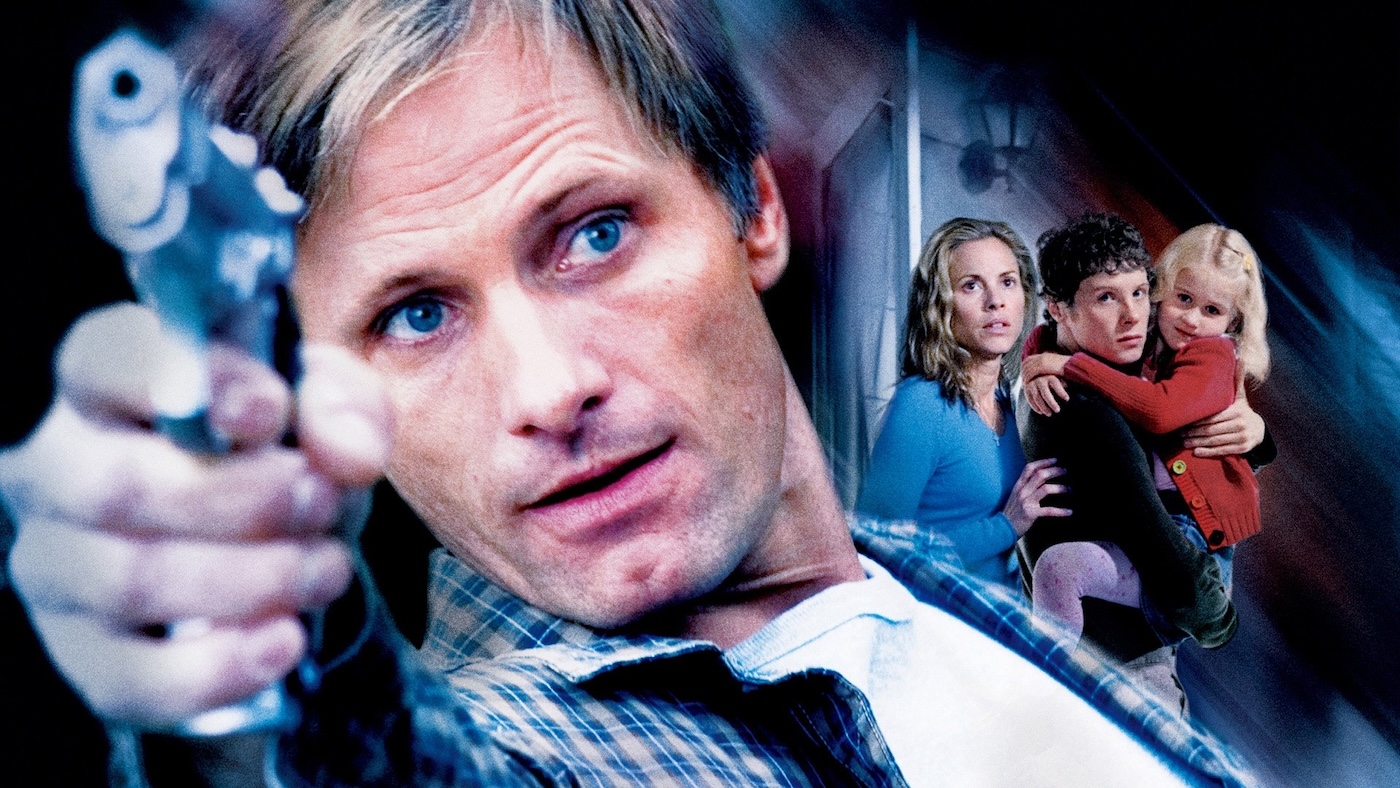
A mild-mannered man becomes a local hero through an act of violence, which sets off repercussions that will shake his family to its very core.


Characterised by his unflinching fascination with exploring the mutable boundaries between flesh, identity, and technology, writer-director David Cronenberg has solidified his reputation as the ‘Master of Body Horror’. From his earliest low-budget efforts Rabid (1977) and The Brood (1979), through to the technological nightmares of Scanners (1981) and Videodrome (1983), and the disarmingly tender tragedies Dead Ringers (1988) and Crash (1996), the auteur’s used his hyperbolic visual vocabulary as a vehicle to explore the sociological and psychological human condition. With the ability to fuse the clinical and carnal and the horrific with the existential, the grotesque horror of his early career would metamorphose into something far more realistic and explicit.
The turn of the new millennium marked a pivotal point in Cronenberg’s oeuvre as he shifted his lens from the literal mutation of the body to the internal mutation of human identity. Based on the 1997 graphic novel by John Wagner and Vince Locke, A History of Violence examines the disquieting malleability of human nature and whether, beneath our constructed selves, lurks a more violent anatomy waiting to re-emerge.
Set against the idyllic backdrop of a small American town, Tom Stall (Viggo Mortensen) is a seemingly gentle man who operates a modest breakfast diner. He’s a devoted husband to Edie (Maria Bello) and leads an unassuming life with his family. This domestic tranquillity is shattered when two itinerant criminals try to raid his establishment. In an explosive moment, Tom thwarts the attempted robbery by disarming the two assailants and killing them in self-defence. After becoming a local hero overnight, his newfound fame quickly curdles into suspicion as Edie begins questioning how her unassuming husband could dispatch two dangerous criminals with such ease.
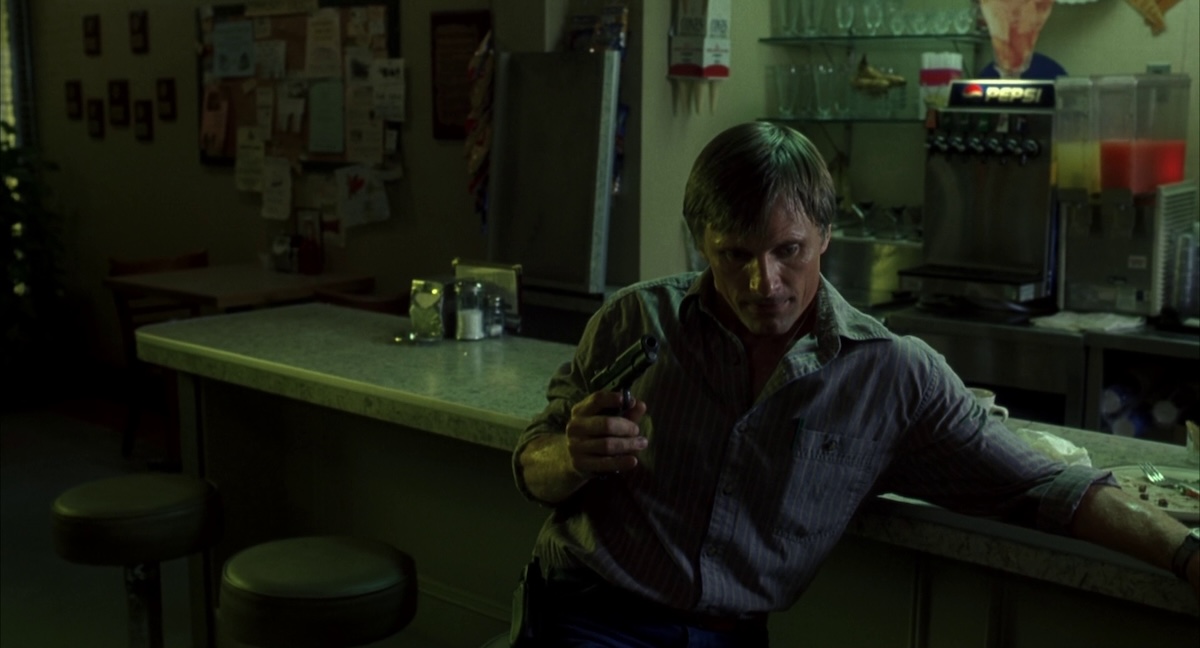
Several days after the incident, a sinister figure named Carl Fogarty (Ed Harris) arrives in town, claiming that Tom is in fact Joey Cusack, a former mobster with a bloody past from Philadelphia. Once Carl’s accusations grow more insistent and his presence becomes increasingly menacing, the fabric of Tom’s family begins to unravel. As the pressure mounts and Edie begins to question the man she thought she knew, contrasted with the man he might truly be, Tom is forced to confront the monstrous lineage he has attempted to suppress.
Before Peter Jackson’s The Lord of the Rings (2001-03) trilogy elevated him to reluctant stardom, Viggo Mortensen had hovered around the margins of Hollywood for decades. His career had been a patchwork of overlooked supporting roles in works such as Sean Penn’s The Indian Runner (1991) and Brian De Palma’s Carlito’s Way (1993). However, A History of Violence solidifies his reputation as a versatile and compelling actor. As Tom Stall, Mortensen is the quintessential everyman whose carefully constructed suburban life collapses when his illicit history is revealed. The actor navigates this transformation with unnerving precision, oscillating between nurturing domesticity and violent assailant with an unsettling grace. Initially, he imbues the character with a plain-spoken warmth and a saccharine innocence shaped by American family values. Yet, there’s an undercurrent of unease behind his eyes that subtly suggests this milquetoast existence is a masquerade for something primal lurking beneath.
When violence ruptures the calm veneer of domesticity and his former personality re-surfaces, Mortensen metamorphoses from nurturing husband to efficient killer with a disquieting naturalism. Without ever succumbing to theatrical excess, he allows the slightest facial expression and casual body movement to articulate his intent. The fractional narrowing of his eyes or the subtle tightening of his jaw communicates more than a monologue ever could. It’s a delicate balancing act governed by restraint and intelligence, but he compartmentalises the opposing sides of his character’s architecture wonderfully. Mortensen’s turn marked the beginning of his creative partnership with Cronenberg, one that would eventually lead to more fascinating explorations of identity and repression in Eastern Promises (2007) and A Dangerous Method (2011). However, A History of Violence remains a career-defining performance and a defining meditation on the duplicity embedded in the American psyche.
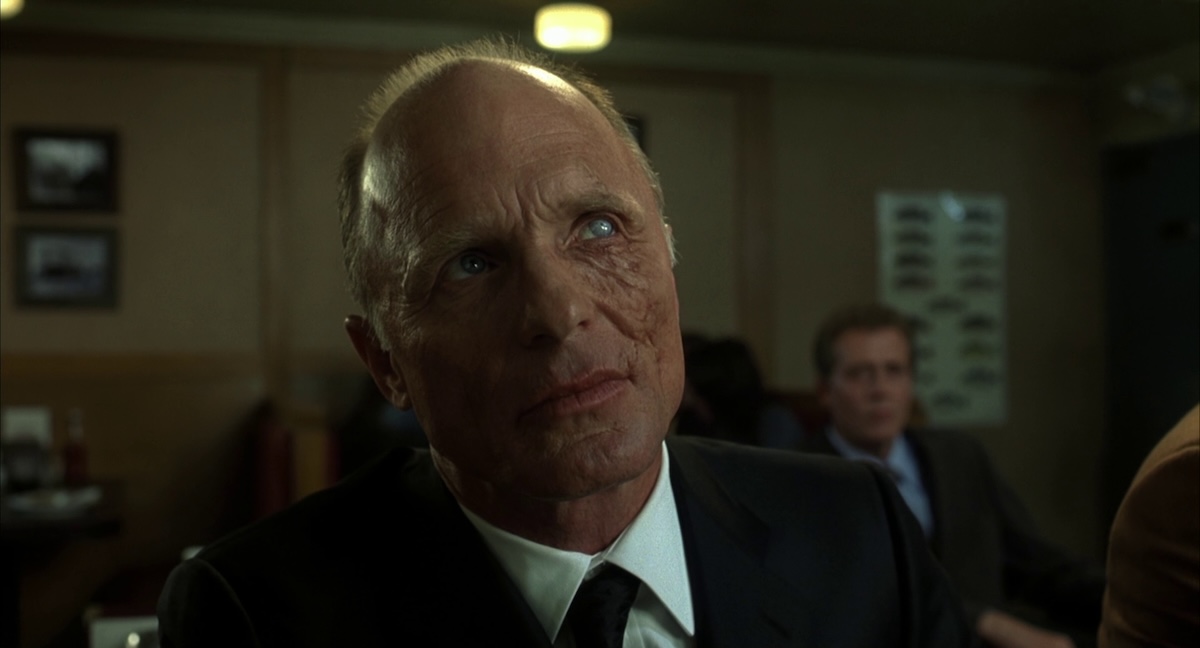
Alongside Mortensen, the entire ensemble delivers performances of remarkable psychological depth. Maria Bello (Coyote Ugly) provides a masterclass in emotional restraint and controlled implosion as Tom’s unsuspecting wife, Edie Stall. The actress captures the harrowing nuances of eroding trust after discovering that the life she carefully constructed rests upon deceit. Her visceral and complex reaction to her husband’s transformation functions as the audience’semotional compass. It’s an unflinching portrayal of intimacy shattered by revelation. Additionally, Ed Harris (The Abyss) provides a study in restrained menace and psychological precision as Carl Fogarty. His scarred face and disfigured eye initially draw attention, but the actor refuses to let his physicality define the character. Transforming what could have been a conventional antagonist into something far more sophisticated, his deliberate speech and unbroken gaze lend the character an unsettling authority. Each line of dialogue carries the weight of certainty, suggesting a man utterly at ease with the threat he represents. It’s a performance of chilling intelligence, and Harris’s presence lingers long after the credits roll.
Even during his most seemingly restrained moments, David Cronenberg has never been a filmmaker drawn towards subtlety or sentimentality. The Fly (1986) was a tragic love story that transformed desire into a literal process of decomposition and dehumanisation, while eXistenZ (1999) reimagined society’s encroaching technological dependence as a sensuous nightmare of flesh and machinery. Against such a catalogue of perverse invention, A History of Violence initially appears like an anomalous entry into his oeuvre. It’s ostensibly a straightforward narrative masquerading as a conventional tableau of small-town Americana, where decency and domesticity seem to prevail over sociopathy and corruption. Yet, beneath this superficial simplicity lies a very particular Cronenberg tension. Creeping around the edges of the frame is an ominous, sleepwalking theatricality much like David Lynch’s Blue Velvet (1986), where the dream of normalcy is sustained by repression.
The tonal duality of the opening moments immediately establishes Cronenberg’s preoccupations with the pathology of human behaviour. During this sequence, two impassive criminals drifting through the American Midwest casually leave a motel room. Their unhurried composure and spontaneous barbarity gesture towards the subterranean brutality simmering beneath the surface of ordinary life. As one leaves the reception, he remarks, “I had a little trouble with the maid”. The offhand comment takes on its full meaning when the audience discovers the front office is drenched in blood.
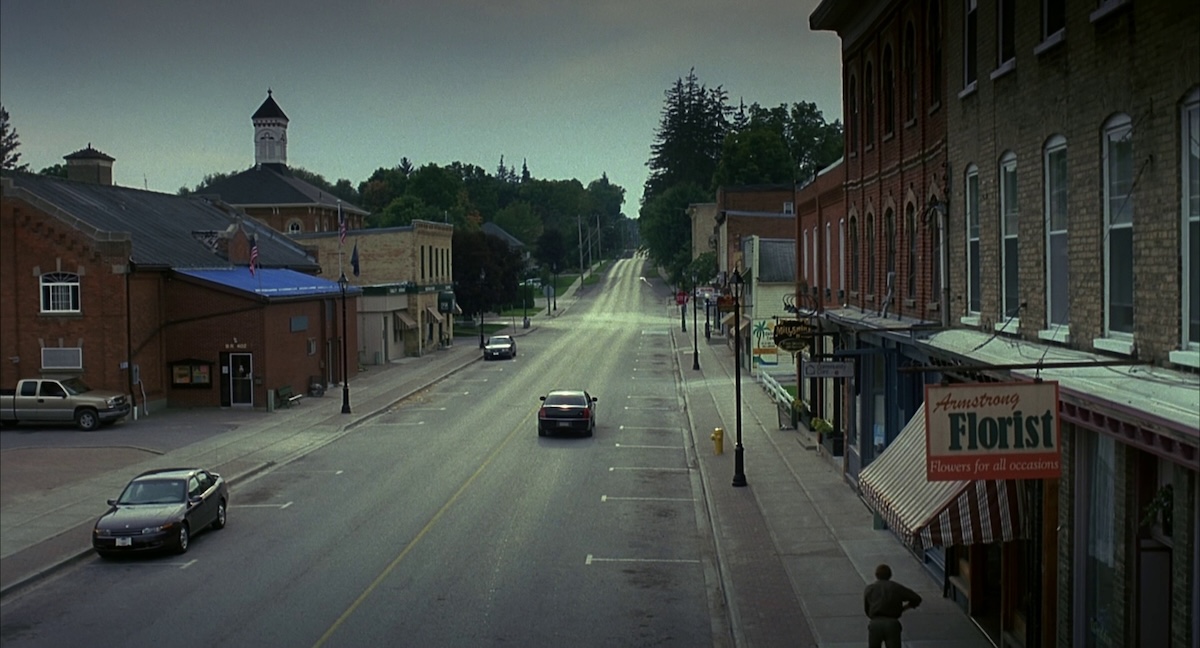
After his partner steps over the slaughtered bodies behind the desk, he discovers a terrified young girl cowering. In a moment that anticipates John Carpenter’s Assault on Precinct 13 (1976), Cronenberg fuses the massacre to the domestic world of the Stall family with a devastating edit. The sound of a revolver aimed at the child whimpering over the carnage, seamlessly dissolves into the screams of Tom’s daughter waking from a nightmare. It’s during this moment that the filmmaker establishes a sinister connection between Tom and the criminals, as though violence bridges two separate worlds like a contagion.
The complexity of Cronenberg’s philosophical underpinnings can be foreshadowed by a quick and simple analysis of the title, A History of Violence. It simultaneously refers to Tom’s personal history with the subject, and also to society’s complicated relationship with aggression. The inescapable truth is that violence is deeply ingrained in human nature like a hereditary infection. All of the action sequences are portrayed without a trace of sensationalism and without a drop of fetishism. Each act of violence is physically devastating, rendered with a disturbing intimacy. When Tom annihilates the criminals and mobsters, he efficiently erupts like a biological echo of his former self. Similarly, Jack (Ashton Holmes) emulates his father’s impulses by mercilessly defending himself against the school bully. Naturally, the audience reflexively celebrates these explosive discharges of bloodshed as virtuosic moments of triumph in a quintessential American fable. However, Cronenberg’s true genius lies in the way he seduces the viewers into complicity.
It’s during these corrosive acts of brutality that the filmmaker exposes the hypocrisy at the core of our cultural engagement with violence. Society finds the same destructive instincts that fuel barbarism both exhilarating and attractive. However, we are also equally repelled by the sickening consequences. The audience becomes complicit in this moral dissonance and is forced to confront the uneasy pleasure derived from the very thing they publicly decry. Of course, Cronenberg is not the first filmmaker to mine the aggression coiled deep within humanity, A History of Violence shares thematic lineage with the ideas broached nearly a century earlier in Edgar G. Ulmer’s The Black Cat (1934) and later reimagined through Park Chan-wook’s Oldboy (2003). Yet, where Cronenberg distinguishes himself from his predecessors is not by asserting that violence is intrinsic to the human condition, but by revealing that society has mastered suppressing it and refining it into socially acceptable rituals.
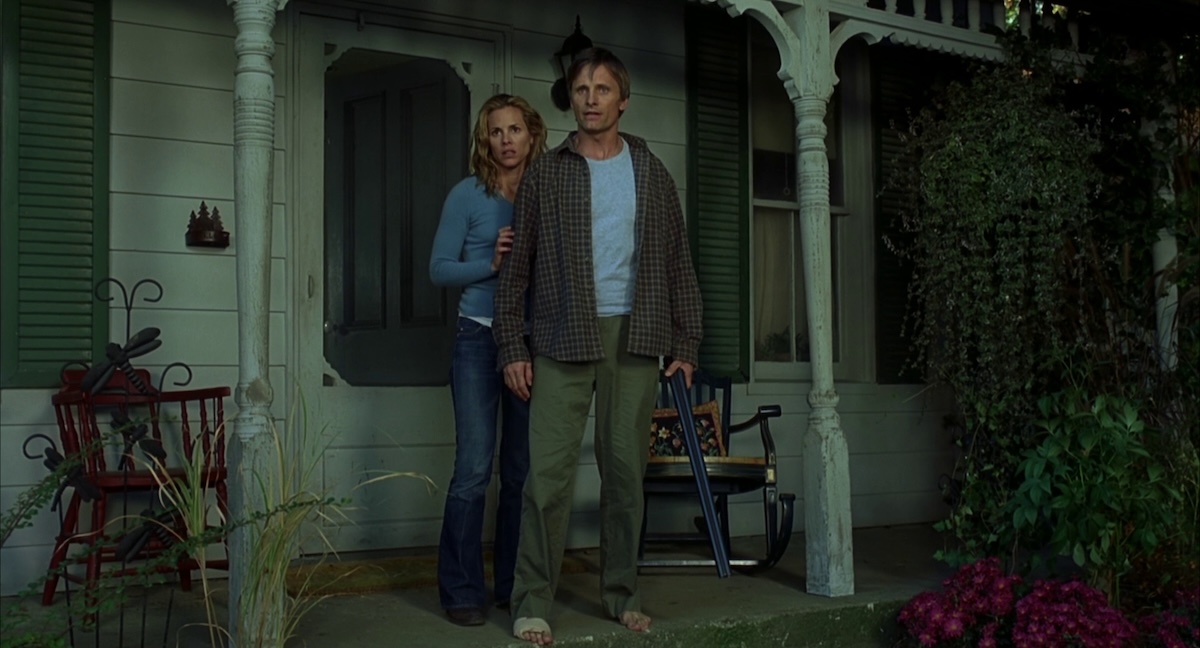
A recurring obsession that finds new expression is Cronenberg’s fascination with the porous line between the erotic and the violent. Dead Ringers examined the pathology of sexual duplicity, while Crash delved into the perverse allure of mechanised desire. A History of Violence re-configures those same fixations with remarkable clarity, using two sex sequences to crystallise his enduring thesis that passion and brutality spring from the same primal source. The first sexual encounter is a playful re-enactment of teenage fantasy, for which Edie dresses in a cheerleader outfit for her husband. It’s a tender moment that creates a portrait of a healthy marriage built on comfort and passion.
However, the second scene contrasts brutally with the earlier tenderness, unfolding like an animalistic confrontation bordering on sexual assault. Taking place on the staircase, Edie is both repelled by the man her husband truly is. Their bodies collide with aggression rather than affection, collapsing into an erotically charged entanglement of passion and fury. By dissecting intimacy the same way he dissected flesh in his earlier works, Cronenberg re-affirms the uneasy truth that intimacy and savagery are born from the same biological and psychological origins as aggression and destruction.
As A History of Violence barrels towards its inexorable third act and the transformation of the Stall family becomes irreversible, Cronenberg conjures an atmosphere so palpable it seeps from the screen. Howard Shore’s (Naked Lunch) musical compositions function as an extension of the moral unease rather than serving as an emotional scaffolding. Much like Josh Olson’s (Infested) screenplay, it operates in two tonal registers. Before Tom’s violent encounter, Shore’s innocent and jaunty textures echo the earnest optimism David Newman lent The Sandlot (1993) and Alan Silvestri to Forrest Gump (1994). However, as the spectre of Tom’s past re-emerges, the melodies curdle into something disconcerting, perfectly articulating Cronenberg’s thesis that violence is just beneath the surface of civility.
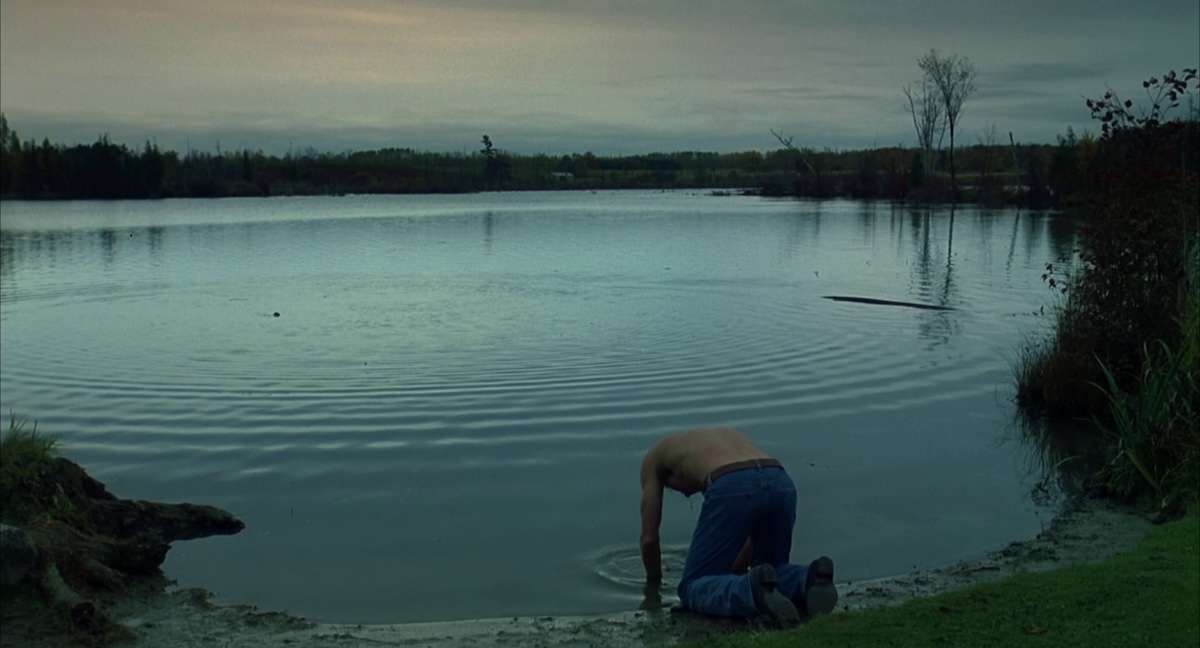
Peter Suschitzky’s (The Rocky Horror Picture Shore) cinematography only adds to the collision of varying sensibilities of existential dread. Initially, Cronenberg’s frequent collaborator constructs his compositions with a Norman Rockwell wholesomeness. His wide-angle lenses seduce the audience into embracing the idealised Midwestern landscape bathed in soft daylight, whereas the pastel palette of Tom’s luncheonette radiates the illusion of moral purity. As the narrative progresses, this visual warmth drains away. Suschitzky’s compositions grow restrained and suffocating, mirroring the paralysis of the Stall family.
David Cronenberg has long been preoccupied with the mutable boundaries of the human body and has built a career upon the grotesque symbiosis between flesh and technology. Audiences expecting a continuation of these idiosyncratic obsessions may be somewhat disappointed that A History of Violence presents itself as a seemingly straightforward tale of suburban domesticity. However, beneath its deceptive simplicity lies a continuation of his life-long fascination with infection and mutation. What might appear as a conventional thriller is a calculated inquiry into our precarious existence and the ease with which violence can mutate identities and expose the instability of civil society itself. Even when venturing into unfamiliar territory, Cronenberg once again proves himself to be a master of genre by holding a mirror to the human condition and reflecting the truthful horrors many would rather not confront.
USA • CANADA • UK • GERMANY | 2005 | 96 MINUTES | 1:85:1 | COLOUR | ENGLISH

Showcasing a wonderful 2160p Ultra HD restoration, A History of Violence has been given a wonderful restoration courtesy of the Criterion Collection. Sourced from the original 35mm camera negatives and a 2K digital intermediate, the transfer is presented in its native 1.85:1 aspect ratio and was supervised by Director of Photography Peter Suschitzky and approved by David Cronenberg.
Unfortunately, Warner Bros. Home Entertainment’s previous 2009 Blu-ray release was plagued with excessive digital noise reduction (DNR), resulting in an image that appeared unnaturally soft and lacking texture. However, Criterion’s re-master rectifies these shortcomings and boasts a presentation that feels wholly revitalised and true to the film’s original visual character. The new transfer appears far more organic and possesses a beautifully rich filmic texture, showcasing a healthy amount of grain that has been rendered cleanly without any signs of digital tampering.
The addition of Dolby Vision adds a pleasing visual element to the presentation and lends the autumnal palette a striking vibrancy. Black levels are rich and satisfyingly deep, while highlights breathe new dimensionality into the proceedings. The image contains an excellent level of depth, with rendering that draws out plenty of delineation. Tight compositions reveal a deceptive amount of detail, exposing individual clothing patterns, textural weaves, and facial blemishes discernibly. Viewers will appreciate the transfer’s ability to maintain a consistent amount of clarity, revealing each scar on Ed Harris’s weathered visage and even the etching on the barrel of Tom’s shotgun. Overall, Criterion’s restoration is a substantial improvement over its predecessor, and fans of A History of Violence will be satisfied with the results.
The Criterion Collection presents this 4K Ultra HD transfer with a single English DTS-HD 5.1 Master Audio track, accompanied by optional English subtitles. Unfortunately, there aren’t many moments where the soundstage roars to life during this presentation. Cronenberg’s thriller is mainly populated with hushed conversations and whispered threats. Regardless, the DTS-HD 5.1 audio mix maintains a pleasing amount of fidelity. The dialogue is rendered clearly and dispersed primarily at the front, allowing the surrounding channels to handle atmospherics. The side channels occasionally open up to allow outbursts of violence and supporting sound effects to create an immersive atmosphere. Several blistering gunshots and shotgun blasts are amplified for sonic impact, reverberating nicely through the environment. The surprising amount of dynamics in the midrange complements Howard Shore’s understated score, allowing it to sweep across the channels subtly.

director: David Cronenberg.
writer: Josh Olson (based on the graphic novel by John Wagner & Vince Locke).
starring: Viggo Mortensen, Maria Bello, Ed Harris, William Hurt, Ashton Holmes, Peter MacNeill, Stephen McHattie, Greg Bryk & R.D Reid.
